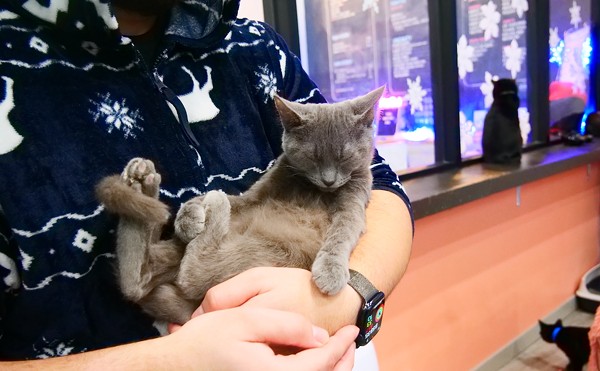After being the inspiration for Meryl Streep’s demanding, commanding, fashion-magazine ice queen in The Devil Wears Prada, longtime Vogue editor Anna Wintour gets a chance to show us what she’s really like in R.J. Cutler’s documentary The September Issue.
It studies how she supervises Vogue’s most important and lucrative fall-fashion issue. But it also reveals how she relates to others — staff, fashion designers, freelance photographers, celebrity models, key advertisers, her Conde Nast bosses — to see if she is indeed as witheringly cold and cruel, as haughty and unemotional, as her detractors say.
The short answer is no. But nobody who sees this will ever call her warm and fuzzy. The English-born Wintour, a divorced mother of two who is in her late fifties and wears her light-brown hair impeccably curled below her chin (and who frequently has on sunglasses to not give anything away), comes off as decisive and emotionally enigmatic. She has an imperial quality, as evidenced by all those who do her bidding, but not a tyrannical one. She walks softly but carries a big stick — a successful magazine that pays her well.
Even in the interview segments with her, where she is obligingly forthcoming about her family (her father was a tough, noted British editor) and even smiles, she carries herself with a certain remove that says, “My time is very valuable, let’s not waste it.”
A lot has happened since 2007’s The Devil Wears Prada. In fact, a lot has happened since The September Issue was filmed. The recession has made the “importance” of high fashion and the magazines that follow it seem outdated and called into question the future of high-end magazines in general. This film chronicles the production of an issue with 700-plus pages; that now seems a part of a bygone era. (Conde Nast just shuttered Gourmet and four other titles — but not Vogue — because of declining ad sales.)
But it’s nevertheless fascinating to see how this legendary — and legendarily cool — editor works and why she has such an imposing reputation. When she is talking to staff or to others, her utterances have the air of pronouncements. She’s not a hothead or a loudmouth; if anything she can seem deceptively passive.
Only once does she look genuinely, explosively angry in the film — when she learns a freelance photographer has more or less tried to force his editorial judgment on a shoot by not developing the photographs he didn’t seem to want and by not shooting sufficient “coverage.” The episode provides a nice little insight into the coded way that superstar photographers — and, I suppose, filmmakers — try to get what they want without ever being directly confrontational.
For the September issue, Wintour — who likes celebrity covers — has chosen Sienna Miller, an actress who maybe appeals to the Britishness of the editor since she doesn’t mean much here. It’s interesting to see how this develops, since Miller’s hair looks a tad unappealing but she doesn’t want to wear a wig for the shoot.
Wintour microscopically analyzes every nuance of the Miller shoot. At such moments, you realize putting out a magazine like this is a form of psychological reasoning. It sells a fantasy to its readers — you, too, can look like this — that depends on their suspension of disbelief. And nothing on that cover can be imperfect or cause the reader to question it.
While Vogue seems primarily a female world (although the fashion designers who seek Wintour’s approval are mostly male), there is one powerful male figure on board, American Editor-at-Large Andre Leon Talley. A tall black man with a theatrical sense of self who owes his weight loss to Wintour’s help and who is sometimes by her side at fashion shows, he’s maybe interesting enough for his own film. If so, it wouldn’t be redundant — you really don’t learn as much about him as you’d like in The September Issue.
But the film does present Wintour’s longtime creative director, Grace Coddington, as her boss’ occasional argumentative foil. Unlike Wintour, who has the poise and fashion refinement of a middle-aged Princess Diana, the Welsh-born Coddington — who’s in her late sixties, with long-flowing red hair — has a post-hippie esprit that makes one think she spent her youth partying with the Incredible String Band.
Coddington comes up with some of Vogue’s more imaginative photo spreads. Insecure about Wintour’s power, she constantly sneaks into the layout room to see if her work will get into the issue and how good the play will be. She seethes at every imagined slight. (In reality, Wintour greatly respects her.)
Coddington-supervised photo shoots are a delight. During one, a young model in a tight corset wants to eat some pie in the studio. She can’t, of course, until it’s over; even one nibble could ruin the fitting — there’s no margin for error. In another shoot, the quick-thinking Coddington incorporates The September Issue’s mildly chubby filmmaker into the action as a humorous contrast to the beautiful model.
When Wintour sees it, she suggests the filmmaker get to the gym. That infuriates Coddington, who seems to respond to the humanness of his body as compared with the world of Vogue models.
At the very end, when Cutler asks Wintour a “what would you do differently next time around” question, she answers she’d like a better back. It’s an odd comment — nothing in the film to that point has addressed back problems. But it makes you wonder if she’s been living a life of physical pain, masking it from the world.
Anna Wintour, woman of mystery. Grade: B
Opens Oct. 9. Check out theaters and show times, see more photos from the film and get theater details here.





